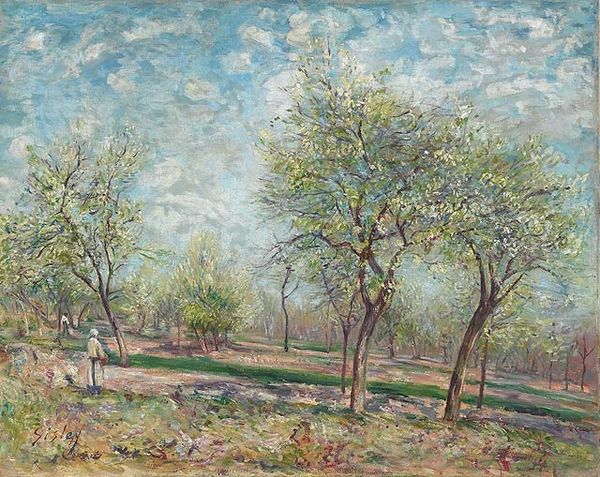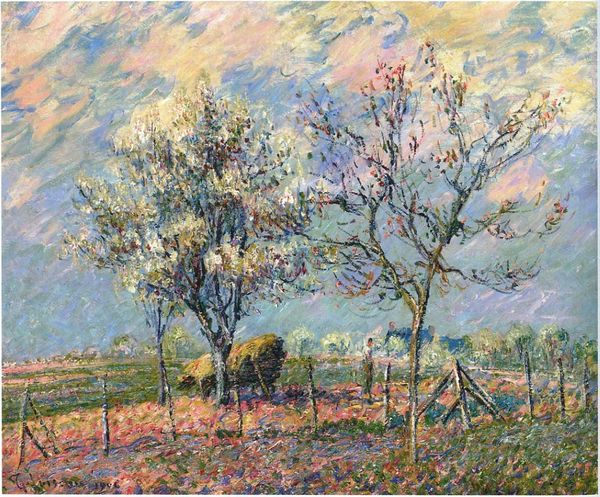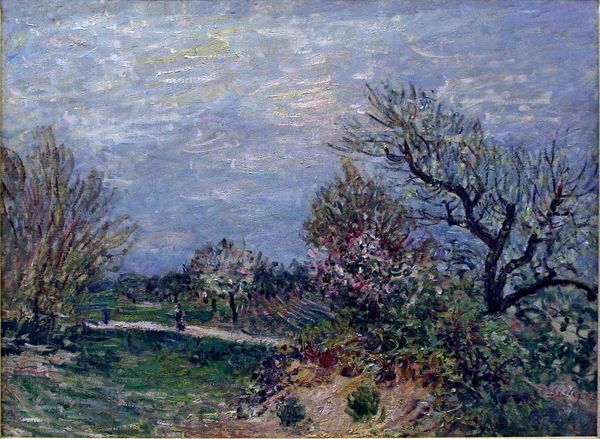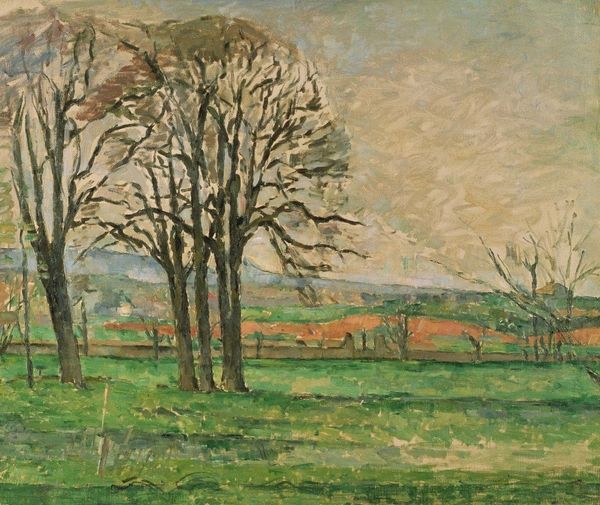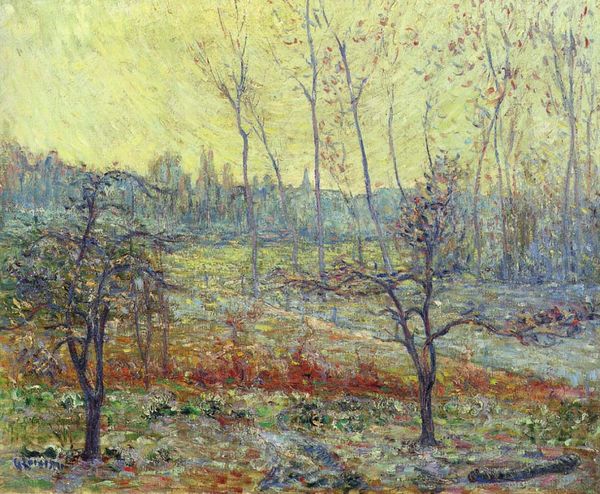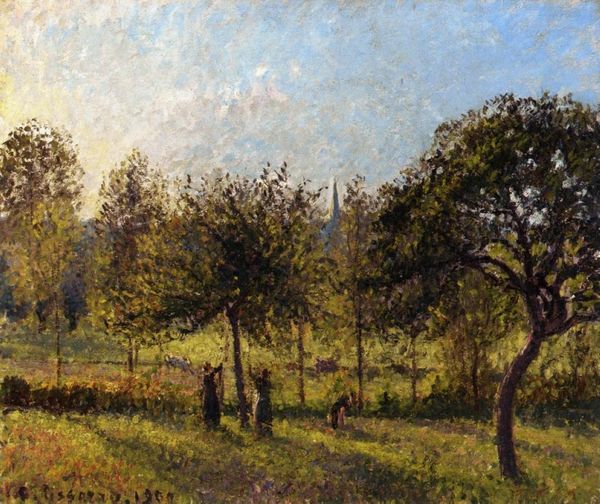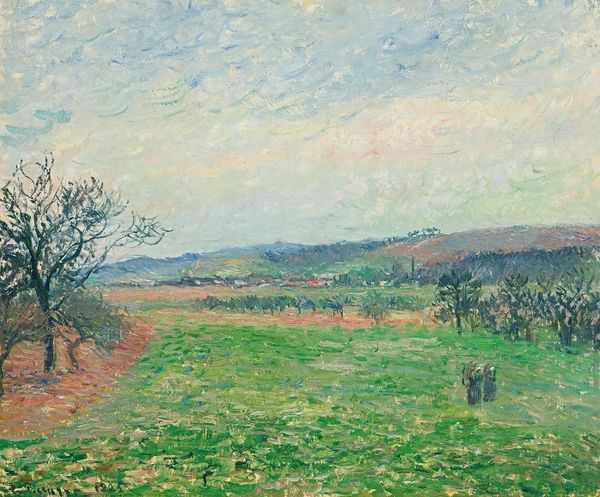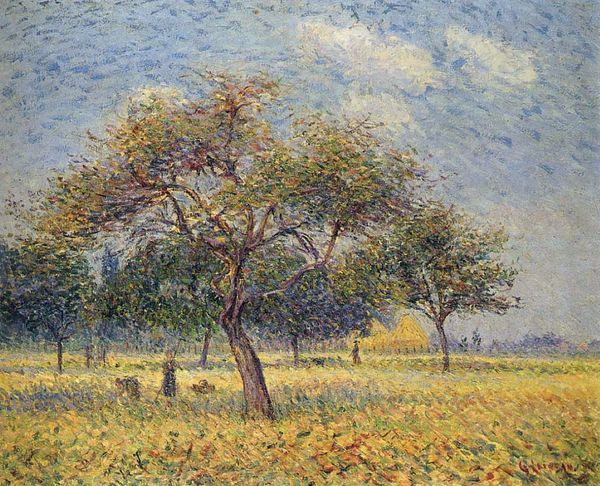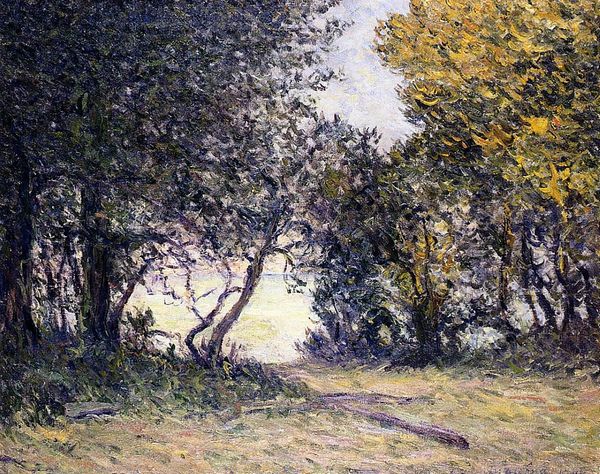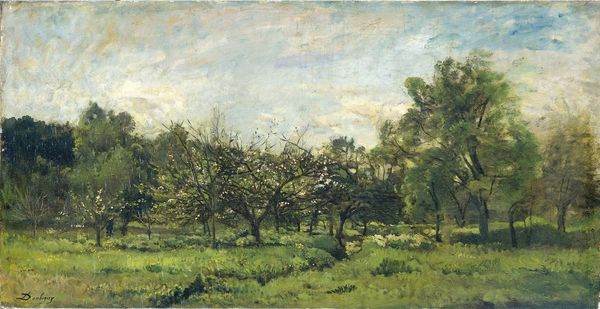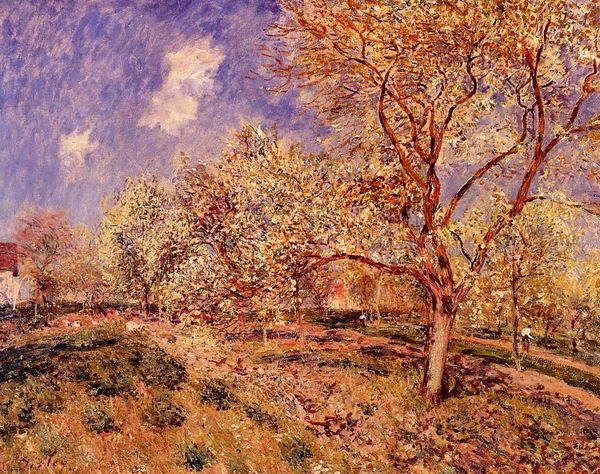
painting, plein-air, oil-paint
#
painting
#
impressionism
#
plein-air
#
oil-paint
#
landscape
#
impressionist landscape
#
figuration
#
cityscape
#
realism
Copyright: Public domain
Curator: This landscape gives me such a strong feeling of gentle hope. There’s something about the delicate pink blossoms and the way the light filters through the branches...it speaks of resilience and renewal. Art Historian: Indeed. We’re looking at "Sablons in Spring," painted by Alfred Sisley in 1890. It’s an oil on canvas, depicting a scene just outside of Paris. Curator: Paris. Always a locus of change, of social ferment. Does the location—Sablons—hold significance in relation to the politics of the time? Art Historian: It was, at that moment, rapidly becoming a suburb, losing its rural character as Paris expanded. Sisley’s work, along with that of his Impressionist peers, really highlights the impact of urbanization on the landscape and everyday life of ordinary citizens. Curator: The everyday… precisely where power dynamics often play out most insidiously. This image is absent of people though; does its silence point to some erasure of lived experience? Or, instead, is the intention to portray nature as inherently healing and unaffected by the social ills around it? Art Historian: That's an interesting proposition. Sisley and his fellow Impressionists aimed at objective representations of landscapes, though one could definitely debate whether pure objectivity is ever truly possible or desirable. His frequent focus on suburban landscapes was certainly a departure from the cityscapes of his Impressionist contemporaries. Perhaps a comment on where new, freer identities can form. Curator: Looking at those buildings obscured by trees, half-hidden. One is reminded of how marginalized communities are often hidden from view, rendered invisible by dominant narratives. How they’re struggling to survive beneath the weight of systemic power dynamics, very much like the saplings hidden in shade trying to reach sunlight. It's a complicated conversation, really. Art Historian: Certainly, and paintings like this, initially seen simply as aesthetic landscapes, become much more profound when examined through a critical lens like yours. Curator: And seeing it within a specific socio-political frame enriches our understanding even further. The act of bearing witness itself is a powerful, political stance. Art Historian: Agreed. Art is never made in a vacuum; it reflects the times and has the power to shape them too. This view has offered so many intriguing angles into one small moment in Impressionist painting.
Comments
No comments
Be the first to comment and join the conversation on the ultimate creative platform.
